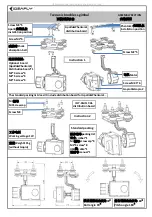
10
1. For winter use in freezing conditions, more protection may be
required. Use skirting and/or insulation below floor level to
provide additional protection.
2. Remember, water freezes at 32°F whether fresh or drainage.
Proper care must be used to protect any system at 32°F or
lower. Local recreational vehicle dealers and campground
personnel may be able to advise you on needed protection.
3. Energy requirements, such as propane and electrical supplies,
must be adequate. Protect your propane regulator from freeze
ups.
4. During cold weather, you will experience more condensation
than normal. Using ventilation or a dehumidifier may be needed.
Condensation
Causes:
A. Condensation occurs when warm moist air contacts a cold
surface, such as rain touching a tent. Awning fabric with people
breathing warm moist air against it inside, due to normal
breathing, is also a cause of condensation.
B. When cooking food or taking a shower, warm moist air circulates
throughout coach attaching itself to cooler surfaces. Forming
beads and running down walls or windows.
C. Normal breathing will emit approximately 1/2 pint of moisture
into the air per person, per day. The more occupants, the
greater quantity of condensation you may find.
Solutions:
1. When taking a shower, open bath roof vent approximately 1/2
inch allowing warm moist air to escape.
2. Use the power vent over range when cooking.
3. If condensation is found in cabinets or closets, open door slightly
to equalize temperature and provide ventilation.
4. Opening windows and roof vents, when possible, allowing warm
moist air to escape is the best way to reduce condensation.
5. Under extreme conditions, you may need to use a dehumidifier
to remove moist air conditions.
In camping, models which have tents or fabric bunk areas, it is even more
important to avoid condensation drops from roof areas. Opening the tent
window at th
e person’s head will allow air to flow across roof, reducing or
avoiding condensation.
Uncontrolled condensation can cause dampness, mildew, etc., inside
your recreational vehicle. Be sure to make strong efforts to control
condensation.











































